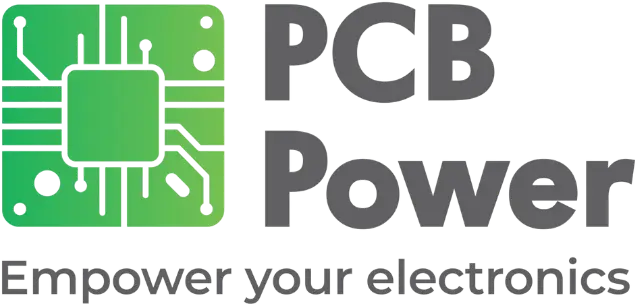
Rogers PCB and FR4 PCB – What is the Difference — PCB Power Market India
FR4 is one of the most popular materials in the printed circuit board industry. Not only is it cheap and readily available, but for most applications, it offers satisfactory performance. However, the statement holds true until the operating frequency is low. Because, as signal frequencies increase, so do the losses in the board, with the signal integrity suffering as a consequence. This is the reason for printed circuit board fabrication using better materials, such as the Rogers PCB. The raw materials for printed circuit boards, offered by the Rogers company, are capable of handling much higher frequencies.
FR4 is an acronym for Flame Retardant Level 4. This is a composite made with glass fiber and epoxy, laminated with copper foil on one or both of its sides. In comparison, Rogers substrate materials are of different compositions, some using a ceramic base in place of glass fiber. Rogers PCBs come in various compositions, such as with woven glass reinforced hydrocarbon, taking the board’s electrical performance closer to that of PTFE.
There are other types of Rogers PCBs also available. For instance, one has laminate materials like epoxy reinforced with woven glass, another with PTFE ceramic, and yet another, a cross-piled laminate reinforced with woven glass.
Why use the Rogers PCB material?
There are several reasons why PCB manufacturing and assembly prefer Rogers’ materials over others. The primary reason is that Rogers’ materials are superb performers in the most difficult environments. Although more expensive than other brands, Rogers PCBs are better performers in unfavorable conditions, which makes them worth their higher price.
The FR4 laminate has become almost an elementary standard for PCB board substrates. It offers the most suitable balance between electrical and mechanical properties, ease of production, performance, durability, and cost. However, with electrical properties and performance starting to influence the printed circuit board design in a larger way, the FR4 material does not measure up to the expectations. On the other hand, PCB manufacturing and assembly with Rogers PCB materials have advantages of:
- Lower electrical signal losses
- Lower outgassing
- Lower dielectric loss
- Better thermal management
- Better impedance control
- Wider dielectric constant
- Cost-effective PCB printing / fabrication
What makes FR4 Different from Rogers PCB?
Frequency of Operation
The major difference between ordinary boards made of FR4 and those with the Rogers materials is in their application. FR4 PCBs perform well only up to a certain range of frequencies, while the Rogers materials perform superbly over a much larger frequency range. That is why Rogers PCB materials are mostly in demand for high-frequency applications extending beyond 500 MHz. In contrast, FR4 PCBs can just about reach 10 MHz.
Moisture Absorption
PCB board materials typically absorb moisture between 0.1 and 0.2 percent from the ambient. Moisture absorption directly affects the electrical and thermal properties of the material. For instance, with higher moisture absorption, the performance and efficiency of the material goes down.
On the other hand, Rogers PCB materials have a very low value of moisture absorption, ranging from 0.02 to 0.08 percent. Therefore, the Rogers PCB materials are more suitable for extreme environments like those in aerospace and defense applications.
Impedance Stability
The dielectric constant of FR4 is approximately 4.5. In comparison, the value for Rogers PCB materials ranges from 2.5 to 11. Therefore, Rogers PCB materials have much higher impedance stability.
Thermal Management
FR4 PCB materials have a thermal conductivity nearing 0.3 W/mK. In comparison, the Rogers PCB materials have a thermal conductivity ranging from 0.5 to 0.95 W/mK. Therefore, Rogers materials can conduct heat much faster as compared to FR4 materials, and that helps to make thermal management easier in PCB manufacturing and assembly.
Types of Rogers PCB Material
Rogers makes various types of PCB material for different applications. These include:
Rogers 4350B: This laminate material offers tight control on dielectric constant while maintaining a low loss performance. It utilizes the same processing as regular FR4, while it is available at a fraction of the cost of regular microwave laminates. Rated for UL 94 V-0, these laminates are suitable materials for high-power RF designs.
Rogers 3003: This material offers excellent stability of dielectric constant over a large range of temperatures and frequencies. It is suitable for ADAS, 5G wireless applications and automotive radar applications operating at 77 GHz.
Rogers RT/Duroid 6002: This material has a very low dielectric constant and low loss. With excellent electrical and mechanical properties, these are ideal for microwave applications. Reliable for use in multi-layered board designs.
Rogers RT/Duroid 5880: This material has a low dielectric constant and low dielectric loss. Most suitable for high frequency/broadband applications. The material has randomly oriented microfibers reinforcing the PTFE composites that help in maintaining a uniform dielectric constant.
Rogers 4534: This material offers an optimization between performance and cost. It is suitable for RF applications like antennas. With a glass-reinforced, ceramic-filled composition, this material offers low loss performance, a controlled dielectric constant, and a great passive response to inter-modulation signals. It is suitable for applications like microstrip antennas and mobile infrastructure. This material is compatible with most lead-free, high-temperature solder reflow processing.
Rogers 4003C: This laminate has both styles of glass fabric like 1080 and 1674. That helps to provide a tight control on the dielectric constant and offers low loss. Although utilizing the same processing methods as standard epoxy/glass, it costs a fraction of conventional microwave laminates. It does not require any special through-hole treatments or handling procedures, as in the case of PTFE-based microwave materials.
Conclusion
For printed circuit board fabrication involving radio and microwave frequencies, mobile networking, and space technology, Rogers PCB materials offer uncompromising performance compared to any other types of PCB materials, including FR4. While being more expensive in comparison to other materials, Rogers PCB materials are worth the extra cost when printed circuit boards must work in unfavorable environmental conditions, at high frequencies, and with very high reliability.



